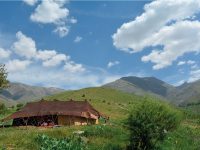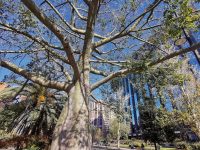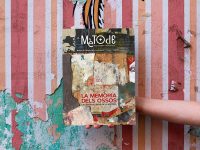Memory written in bones
From Funus rites to the osteobiography of Valentia
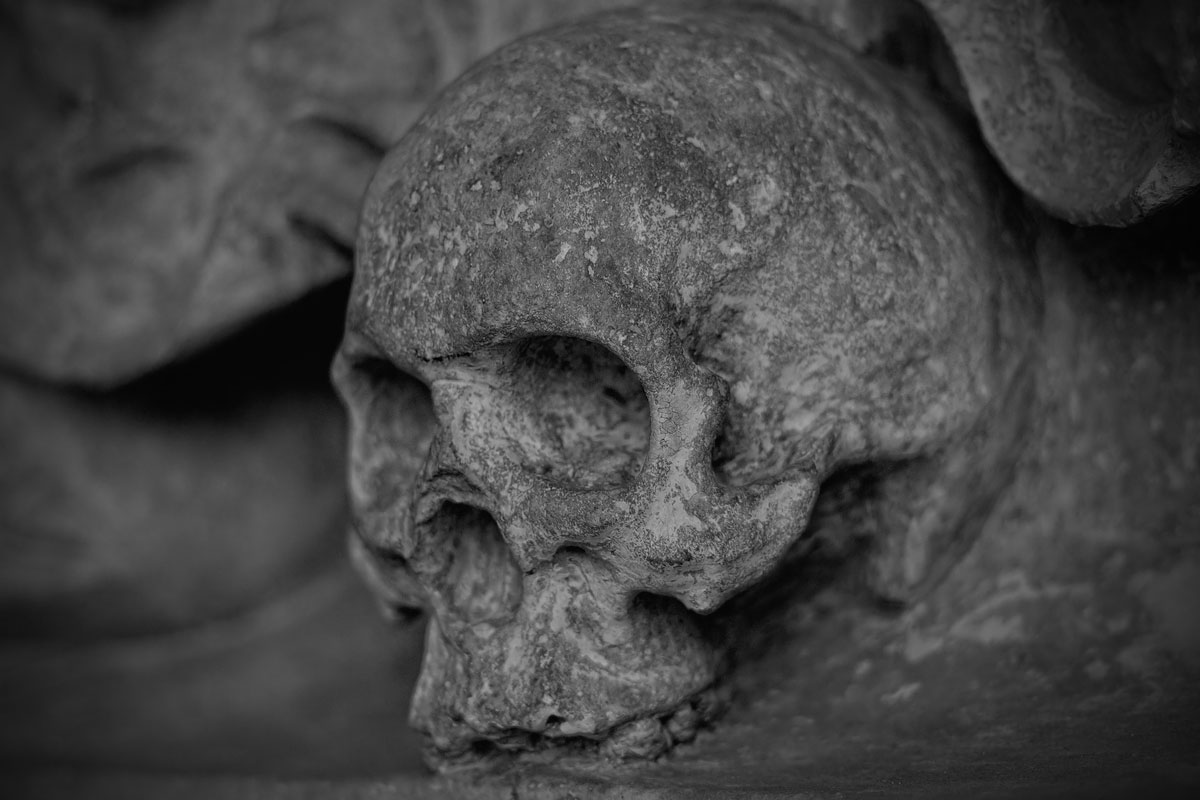
The Roman necropolis in Carrer Quart in Valencia (Spain) is the city’s oldest known cemetery, dating from between the second century BC and third century AD. Based on its archaeological and bioanthropological analysis, we examine various hitherto unknown issues from an interdisciplinary perspective. By using isotopic archaeochemistry, various aspects, such as those concerning funerary practices, social stratification, paleodemography, quality of life, and the impact of disease, food, and the subsistence economy, as well as population mobility, have enriched our knowledge of the landscape of the old town. Science and memory converge in Valentia through the culture and traditions documented in the funerary ritual (funus valentiae).
Keywords: funerary archaeology, palaeopathology, paleo diet, isotopes, Valentia.
The memory of our ancestors is written in their bones. From such disparate perspectives as human, biological, or medical sciences, we can acquire many insights into the life and death of those who once inhabited the cities we inhabit today. Human remains are the best fossil directors to learn more about our lineage and our memory. Some authors have compared the bioarchaeological analysis of ancient societies with that of detective work, and to a certain extent it is. Studying the bones and teeth of our ancestors implies deciphering clues that may or may not end up becoming evidence and objective proof for understanding our history.
The main study vector for these analyses is archaeology, a science that in the twenty-first century has become a means to connect multiple auxiliary sciences. Therefore, history, science, and memory converge in the palaeobiological record. Bones and teeth are the reservoirs of ancient DNA and much more. They are essential keys to deciphering the history of those who built Spanish cities, many of them rooted in 2,000-year-old Roman foundations.
«Human remains are the best fossil directors to learn more about our lineage and our memory»
Whenever we attempt to learn about the life and death of populations with scarce written sources, the archaeological funerary record is one of the main sources of evidence that scientists try to paleotranslate using present day knowledge and techniques. Consider the following example: what and how much do we know about the first population that founded the city of Valencia (Valentia) in Spain? Traditional archaeology has provided answers, but physical anthropology, medicine, and other sciences have also contributed valuable information (García-Prósper, 2016; García-Prósper & Polo-Cerdá, 2016; García-Prósper, Polo-Cerdá, Romero, & Iborra, 2010; Polo-Cerdá, 2017; Polo-Cerdá & García-Prósper, 2002).
The settlement of Valentia was one of the earliest Roman foundations in the Iberian Peninsula. We know from literary sources that in 138 BC Junius Brutus led a licensed military expedition that founded the settlement. The first written source referring to the foundation comes from a quotation from the lost index of book 55 of Titus Livius’ Periochae, which reads: «Iunius Brutus co(n)s(ul) (in Hispania) iis, qui sub Viriatho militaverant, agros et oppidum dedit quod vocatum est Valentia». Its translation and interpretation would mean: «Junius Brutus, consul in that year along with Publius Cornelius Scipio Nasica Serapio, who was in charge of the government of Hispania Ulterior, colonised with soldiers who served sub Viriatho [the most accepted interpretation would be «in times of»] a city that was given the name of Valentia.
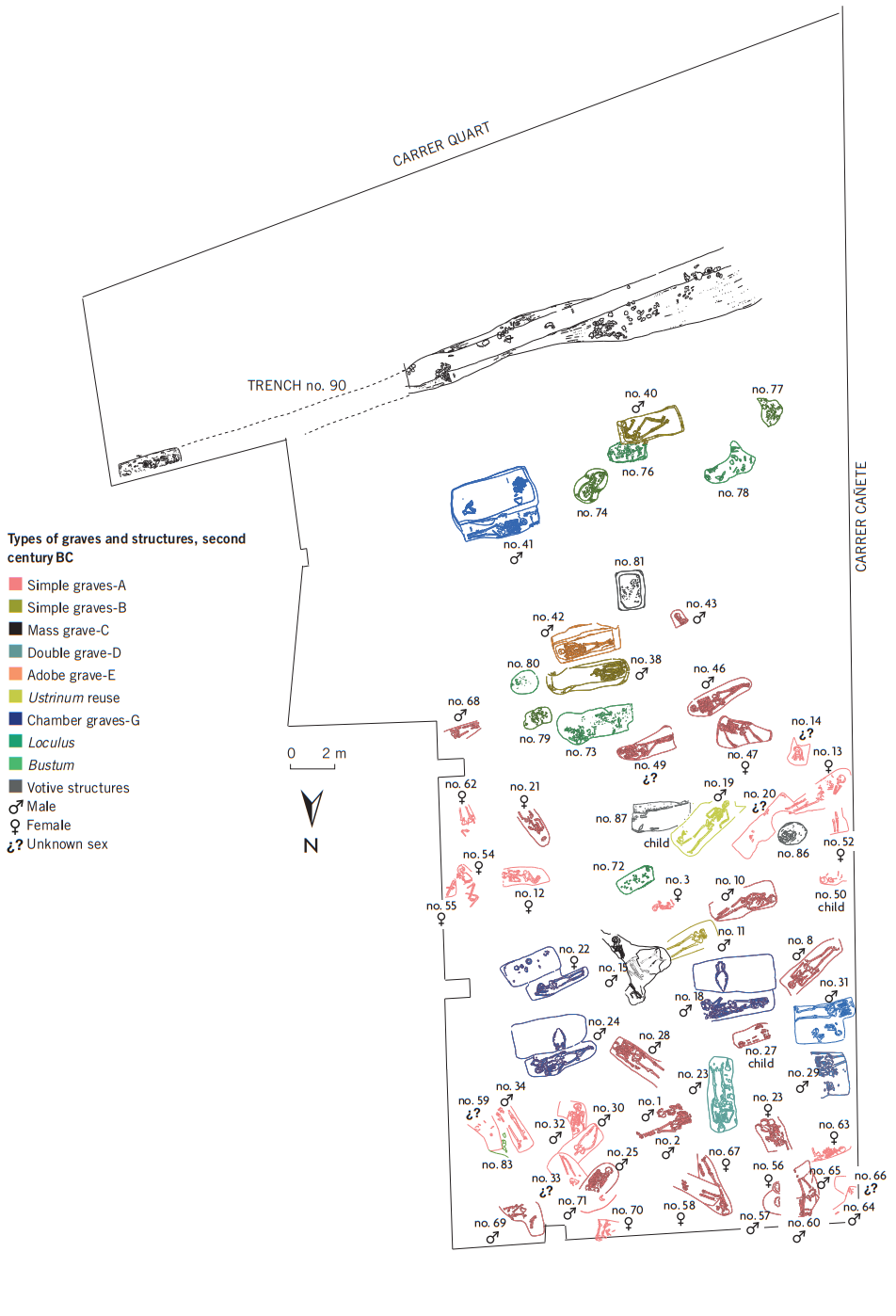
Figure 1. Planimetry of the cemetery in Carrer Quart in Valencia in the second century BC. The different burial and cremation types and their distribution are marked by sex. For the former, the majority of tombs were simple (type A tombs fit the body of the deceased, while type B tombs were larger, and individuals could be found in anomalous positions). With respect to cremation, elements such as the ustrinum (funeral pyre), bustum (primary cremation, which occurred in the same location as the burial), and loculus (secondary cremation, in which the remains of the cremation were transferred and deposited in an urn at a different location) can be observed. At the top is a 15-metre ditch filled with votive objects that serves as the southern boundary of the necropolis. / Grup Paleolab®
The foundation coincided with a key moment between the defeat of Viriathus in 139 BC and the destruction of Numantia in 133 BC; its strategic geographical location, equidistant between Tarraco and Carthago Nova, is no coincidence. Archaeological and geomorphological research has confirmed these facts, and we have more and more data on the foundational process. But if there is something special about this fact, it is the initial isolation of the original settlement and the alien condition of its first inhabitants, which gives the material culture a genuine character which has become known largely thanks to the discovery of the oldest cemetery known to date in the city, located between Carrer Quart and Carrer Cañete (Figure 1).
«Bones and teeth are essential keys to deciphering the history of those who built Spanish cities»
This necropolis is one of the best testimonials of the origin and evolution of the city, since its stratigraphy contains a wide chronological sequence that extends from the second century BC until the third century AD. Other significant events from the first centuries of life of the urbs valentina, such as its destruction in 75 BC during the war between Pompey’s troops and the rebel army of Sertorius, have also left their mark. Another example is how, after a period of ostracism and almost total abandonment, the city was rebuilt little by little until the middle of the first century AD. At this point, epigraphic inscriptions emerge that speak of a complex municipal organisation, materialised in two orders (ordo coloniales): Valentini Veterani et Veteres, where the latter (veteres) refer to republican colonisers or first settlers, and the former (veterani) to imperial colonisers who arrived after the destruction of the city and a second deductio (a new arrival of citizens, probably discharged soldiers and other settlers).
The city of Valentia and its first cemetery
The necropolis was some distance away from the republican forum, in a semi-elevated area unsuitable for cultivation. The sand provided by the floods of the Turia paleochannel facilitated the construction of the first tombs. In accordance with the laws of the time, the sepulcretum was placed on sterile ground next to one of the main centuriation axes, with the continuation of the decumanus maximus being the silent witness of the memory of those first inhabitants.
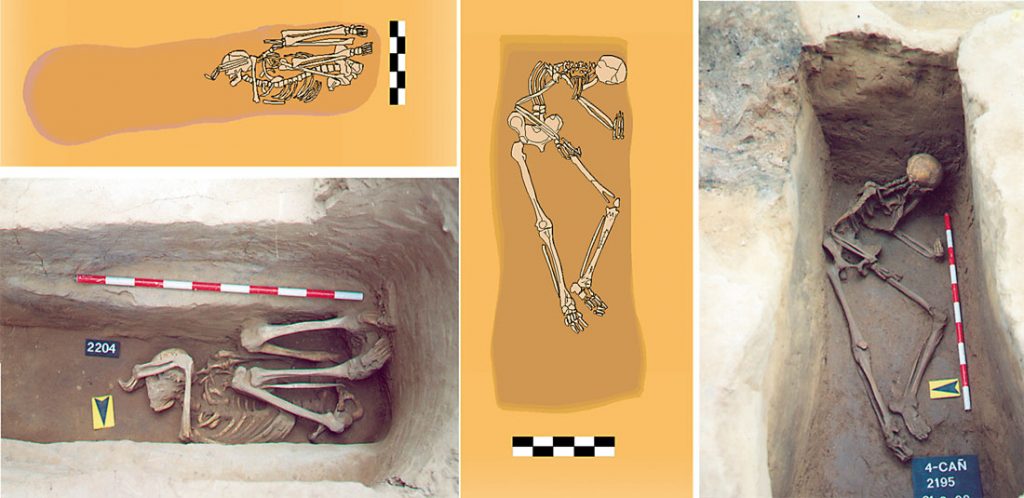
Figure 2. Tombs of the foundational period of Valentia with individuals buried in anomalous positions; i.e., without a pattern in the positioning of the corpse. In the image on the left, the individual exhibited a forced hyperflexed lower-limb posture, while the image on the right exhibited a forced seated posture. The possible explanation for these cases is that these individuals suffered from tuberculosis. / Grup Paleolab®
The archaeological work carried out over five campaigns between 1996 and 2000 on a 531.85 m2 site, resulted in the discovery of 248 tombs representing both burial ritual types (inhumatio and crematio). A total of 179 burial tombs containing 190 skeletons, and 69 cremation tombs accommodating 61 individuals were documented. The stratigraphic sequence of the cemetery space is distributed into three funerary horizons that span from the moment of its foundation in the last third of the second century BC, until the third century AD. The funerary evolution coincides with the memory and pulse of the main historical episodes lived in the city.
Tombs, gestures, and origin: the evolution of funerary rituals
The funerary topography of the first period denotes a strong overlap of tombs excavated in the natural strata of the riverbank and a boundary to the south, close to the decumanus. This border comprised a ditch about 15 meters long, which was shallow and silted and contained the same type of objects typically found in many of the most important tombs, all of which conferred a strong votive character to the structure.
The burial tomb types were diverse (up to eight different types). Most of them were simple tombs which closely fit the body of the deceased they contained. They were pits excavated in the natural clay and sand stratum, often without, or containing very few, funerary furnishings. The distribution of tombs does not denote any layout organised according to the biological profile, i.e., the sex or age of the deceased; they accumulated in the necropolis sector bordered by the aforementioned votive ditch. Their orientations were arbitrary, although there was a slight east-west orientation predominance. Similarly, there was no organised distribution in terms of the skeletal position or that of the arms and legs inside the tombs, although the supine decubitus position was the most common position.

Figure 3. Chamber tomb or hypogeum, probably belonging to an individual of high social class. This is one of six graves of this type documented in the foundational phase of the Roman necropolis on Carrer Quart in Valencia. Funerary objects include unguent jars (1, 2), a ring (3) and strigiles (4). / Grup Paleolab®
Among these simple tombs, three large ones stand out because their occupants had unconventional or anomalous positions, that is, there was no pattern in the position of the corpse or the funerary objects: in two cases, a forced seated position, and in the other, forced hyperflexion of the lower extremities (Figure 2). To a large extent, the accepted explanation for these positions resides in the illnesses they may have suffered and which may have led to their deaths (tuberculosis).
However, if we must highlight a burial typology for this period, it would be that of six-chamber tombs or hypogea (Figure 3), which were unusual not only for Valentia, but also for the whole of the Roman West. Based on their typology (large graves with a lateral niche excavated into the natural sands and clays) and ritual practices such as the porca praesentanea (a rite for the goddess Ceres in which a pig is sacrificed to consecrate the grave and to be consumed in the funerary feast), these tombs show funerary traditions that are free of any indigenous components and constitute the cornerstone for understanding the foundation of the city.
«The settlement of Valentia was one of the earliest Roman foundations in the Iberian Peninsula»
In this type of tomb, the corpse was placed in the lateral niche, together with the objects to be taken into the afterlife, which included amphorae of import wine, strigils, small autochthonous pots and fine goblets, and macrofauna, which served as food for the families of the deceased. In this sense, zooarchaeological studies have found the presence of suidae and ovicapridae animals and have provided information about the type of sacrifices made and the origin of these species, some of which were even foreign to the Iberian Peninsula.
It has already been mentioned that both burial and cremation rituals were practiced from the earliest years. Regarding cremation, ceramic urn graves with a marked indigenous character predominated. These differed from purely Roman loculi (secondary cremations) in terms of the weight and quality of the combustion (García-Prósper, Polo-Cerdá, & Guérin, 2003). During the first century BC, the structure was further supported by the construction of secondary paths, providing evidence of the first organisation of the funerary complex, where tombs and ustrina (funerary pyres) were distributed throughout the space that had previously been free of tombs. This process coincided in time with the Sertorian wars, a period characterised by a greater abundance of cremations to the detriment of burials, as a consequence of the depopulation of the city (deletio) caused by social instability.
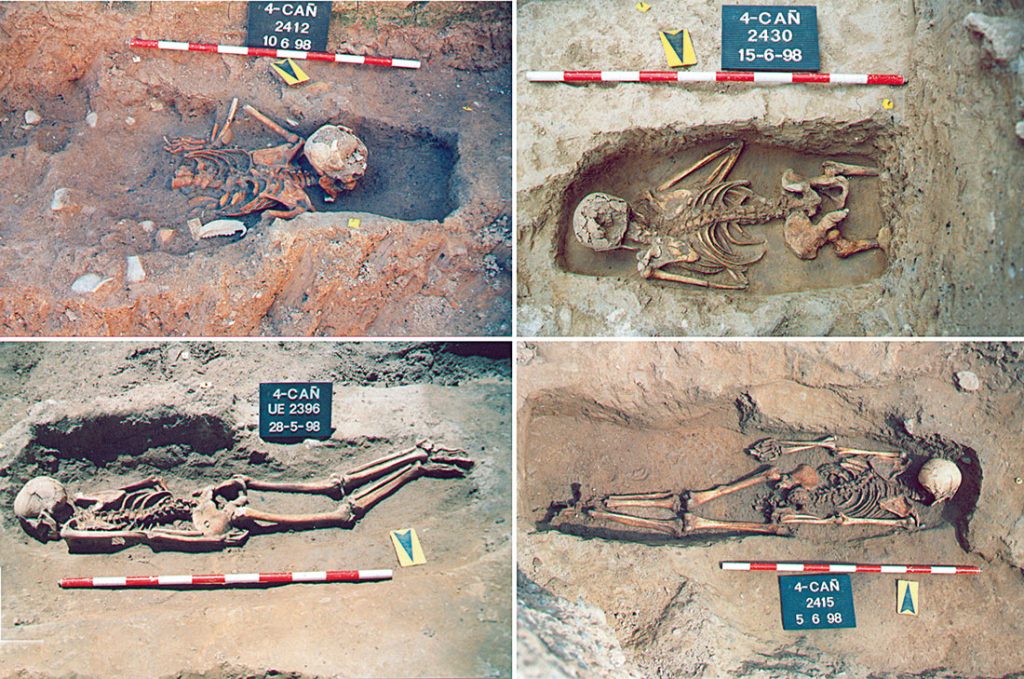
Figure 4. Burials in the decubitus prone position in Imperial Valentia from the first to the second century AD. This posture may indicate that the individual belonged to a lower social status, or died from an infectious disease, or even as a result of a violent event. / Grup Paleolab®
The evolution of funerary rites is evident with the turn of the century. Whether in tomb typology or in funerary objects, the necropolis underwent a transformation, and with the «refoundation» or second deductio, a new human group arrived (and joined the descendants of the founders) who again populated the city and left their mark in their funeral rituals and practices.
A standardisation of the funus can be observed in the archaeological record, which corresponds to some extent with observations from other necropolises in the Empire. Rituals became homogenised and the duality is still evident, but burials became more common again from the third century AD.
The typology of most imperial period burials is simple and marked by the presence of items which, over time, would decrease in number and representativeness. Of these tombs, those whose occupants were buried in a prone decubitus position (Figure 4) and in a specific sector of the necropolis (next to the current Carrer Quart, the old location of the decumanus) stand out. The interpretations of these anomalous burials point to causes related to their low social status or possible causes of death that required a quick burial, sometimes with forced arm positions, and with pathological evidence compatible with the presence of infectious diseases such as (again) tuberculosis, or violent deaths, evidenced by the presence of traumatic perimortem lesions of a different aetiology.
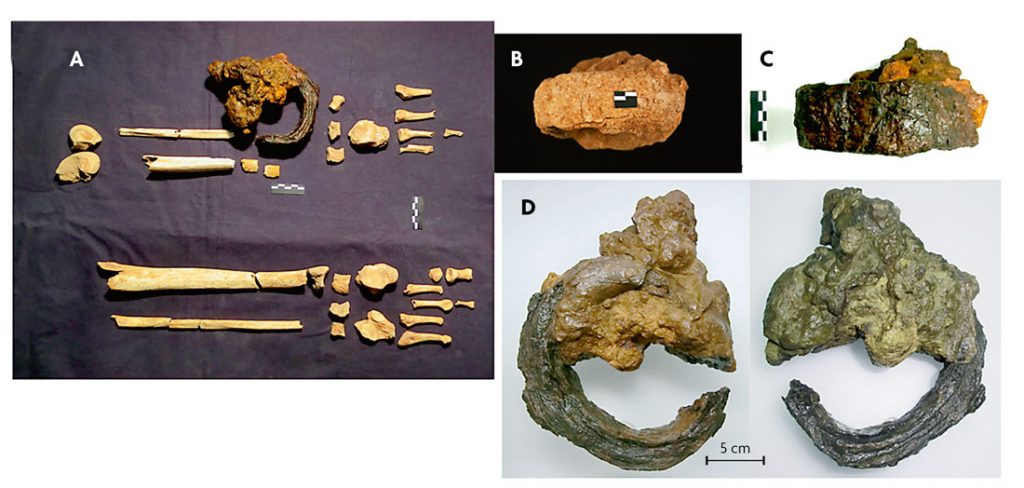
Figure 5. Skeletal remains of a slave/captive in Valentia in the first century AD. Picture A shows the preserved bone remains. B shows the oxidised iron shackle before restoration. C shows the restored shackle, and D shows its front and back. / Grup Paleolab®
As part of this singular set of burials, the discovery of the only skeleton to date found with an iron shackle on one of its ankles is worth noting (Figure 5). It has been interpreted as a slave or captive buried next to an animal offering, with a shroud and in a supine decubitus position. These gestures denote care in the execution of his burial, which could well be an example of a funeral arranged by a collegium (funeral service) or under the protection of the fraternity of slaves adoring Isis (sodalicium uernarum), documented in Valentia through epigraphic sources.
Bones and epitaphs for an unknown palaeodemography
A large amount of paleodemographic information could be inferred from osteological samples. The composition and structure of the republican population is represented by an important human group comprising mainly men (60.87 %) – almost double the number of women (28.99 %). The death rates for males were higher than for females in every age group and the sex ratio (number of male skeletons divided by the number of female skeletons) for this period (2.1) is abnormal (currently it is 0.97). The aetiology of this observation may be related more to social factors (Valentia’s military colony status) than to epidemiological, economic, or geographical factors. Conversely, the human population in imperial Valentia had more women than men (51.28 % versus 39.74 %) which could perhaps be explained by conditioning related to the process of reconstructing the city and a progressive demographic increase.
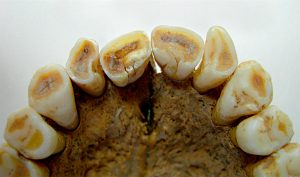
Figure 6. The picture shows the Etruscan tooth or Etruscan upper lateral incisor in an individual from Republican Valentia (second century BC) showing the curvature of the mesial face. This phenotypic expression, which was present in 19.05 % of the colonial population of Valentia, reinforces the hypothesis that the population had a Roman-Italian origin with a strong Hellenistic influence, such as the one around Etruria. / Grup Paleolab®
The highest mortality peaks were between 20 and 40 years old (65.88 % in the republican series and 53.33 % in the imperial series), which peaked between 31 and 40 years old. These high rates during the foundational period could be explained in terms of health (deficient urban sanitation during the period of construction of the new colony), epidemiology (impact of certain infectious diseases), or socioeconomics (periods of famine associated with a more limited subsistence economy or with the availability of fewer resources). The death rate in the first year of life for the republican series would have been around 17 % (if we consider the population to be stationary), while for the imperial series it would have been approximately 24 %. In general, infant mortality rates in the first five years would have been between 32 % and 37 %.
Life expectancy at birth was between 29.88 and 30.55 years, depending on the period; these values coincide with paleodemographic studies undertaken in Hispania for other archaeological series, but the average is lower than the one recorded from the study of the Corpus Inscriptionum Latinarum (CIL)1 epitaphs, which placed it at about 40 years (Macdonell, 1913).
Bone mechanics: morphometric variability, origin, and occupation
From the analysis of more than fifty morphometric variables in each skeleton, we were able to characterise the Valentine population. Our diachronic analysis of height showed that republican males were slightly taller (164.5 cm) than imperial males (163.1 cm), while the results for females were reversed, with republican women being slightly shorter (151.2 cm) than imperial women (154.3 cm).
The cranial epigenetic phenotypic variability was much more accentuated in the foundational population, especially in males, which suggests that the group of the first settlers could have been more isolated and might have come from a specific area of the Italic Peninsula. In this respect, the phenotypic expression of the Etruscan tooth2 (Figure 6) in 19.05 % of the colonial population reinforced the hypothesis that the foundational population had a Roman-Italian origin with a strong Hellenistic influence, similar to the area of Etruria.

Left: Figure 7. The pictures at the top show an antemortem supracondylar fracture of the right femur in a male adult of the Imperial period with a subsequent displacement due to muscle traction of the quadriceps and calves (bottom left). The bottom right radiological image shows a callus fracture with shortening of the extremity.
Right: Figure 9. Left carpal syndactyly in a 5–6-year-old child during the republican period. This could be a polymalformative disorder linked to mental retardation. / Grup Paleolab®
The study of different occupational stress markers allowed us to approach functional variability according to social rank and gender; all this by reading the bone mechanics resulting from repeated activities. Diachronic analysis of more than twenty of these markers allowed us to observe a progressive increase in biomechanical load as the city evolved. We observed inter-populational differences according to sex and age which were linked to distinct occupational patterns and were more accentuated in republican men and imperial women. These differences could be explained by military activity (in men), while in the female population they would reflect different occupations within a fully established and growing society. The significant presence of some of these markers in the child-youth population was by no means negligible and allowed us to confirm the existence of local child slavery, which was especially pronounced during the period of colonial reconstruction.
Health and disease: osteobiographical approaches
Paleopathology is a subfield of the history of science and medicine. Diagnosing a condition in the past is not an easy task, it requires an interdisciplinary approach to reliably understand the osteobiography of an individual or population. Valentia has provided countless data on the state of health and disease of its first settlers. To analyse these, the method of Thillaud and Charon (1994) was followed. The study begins with an anamnesis of the archaeological context, continues with a bioanthropological study, and concludes with a description of the osteological evidence of elementary macro- and microscopic lesions, supplementary medical tests (especially radiological imaging), and the formulation of a diagnostic judgment after a thorough differential analysis. Paleoepidemiological rates can be inferred from an individual diagnosis, where the prevalence of nosological entities and their potential social impact are analysed. In the following, we give some examples.
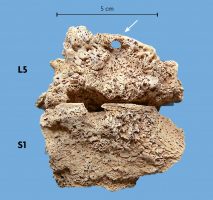
Figure 8. Advanced bone tuberculosis (Pott’s disease) in a skeleton from imperial Valentia. Note the pronounced infection of vertebrae L5 and S1, which were virtually unrecognisable and had two fistulised purulent cavities. / Grup Paleolab®
Osteoarticular and degenerative pathologies were the most prevalent pathologies. There were some spinal osteoarthritis inter-populational differences that suggested variability in the biomechanical stress put on the axial skeleton. The high frequency of lumbar osteoarthritis (61.29 %) in republican males could be related to the construction of the colony, while the high frequency of cervical osteoarthritis in imperial males (44.44 %) might be due to a different occupational activity from the previous period. Shoulder and upper extremity osteoarthritis had a high incidence in 20–40-year olds which would seem to confirm an occupational aetiology. Schmorl’s nodes and spinal disk herniations affected the founding population to a greater extent and intensity (27.66 %) and more than 70 % of the individuals suffering from them were aged under 40 years.
There were no inter-populational differences in antemortem traumatic pathologies (Figure 7), which stood at around 17 %; forearm and rib fractures were the most common injuries of this type. The presence of myositis ossificans progressiva is linked to muscle microtrauma associated with horseback riding, and if we consider the frequency of this trauma as a reflection of the socioeconomic status of the population, then the rates obtained could correlate with a middle-class population range (plebs urbana). On the other hand, perimortem pathologies (deadly fractures and stab injuries) are directly related to violent deaths, mostly recorded during the first century AD in individuals buried in the prone position in simple graves, which allows us to infer their low social status (miseri or slaves).
Infectious pyogenic diseases such as sinusitis and otitis had a low prevalence (2 %–6 %), while signs of osteitis by parasitosis were documented in 10 %–15 % of the sample. In contrast, widespread infectious diseases related to long-bone periostitis were much more prevalent (23.1 %), especially those compatible with bone tuberculosis (Pott’s disease; 5 %–12 %; Figure 8), pulmonary and pleural tuberculosis (25.35 %), brucellosis (3.70 %), or other pulmonary pathologies more or less directly related to exogenous environmental and public health factors. These findings would confirm the introduction of tuberculosis and other infectious diseases by the colonial military detachment (Polo-Cerdá, García-Prósper, Guérin, & Villalaín, 2004), as well as the reintroduction of new cases during the repopulation in the first century AD.
In addition, tumoural or neoplastic pathologies had a low prevalence (5 %–9 %), and were mostly benign cranial tumours, although two cases compatible with malignant tumours were recorded (one nasal and the other with a possible haematological cause). The prevalence of congenital pathologies was even lower (< 5 %). For example, the find of a republican child aged under six years with complex metacarpal bone syndactyly was striking (Figure 9) and suggests a possible association with a polymalformative disorder linked to mental retardation (possibly Down syndrome).
The prevalence of porous diseases (cribra orbitalia and porotic hyperostosis) related to malnutrition and other deficiencies (anaemic osteopathies and hypovitaminosis), must be considered globally as medium-low (17.39 %), and so by inference, the relative socio-economic stability did not prevent cases of infantile hypovitaminosis in the most disadvantaged population. In contrast, three cases of non-deficiency metabolic pathologies were documented (two arthropathies due to microcrystals compatible with gout and a diffuse idiopathic skeletal hyperostosis (DISH or Rotés-Querol disease), as shown in Figure 10). These diseases are typical of a higher «social status» because of their strong association with sedentariness, obesity, diabetes mellitus, or diets rich in animal proteins.
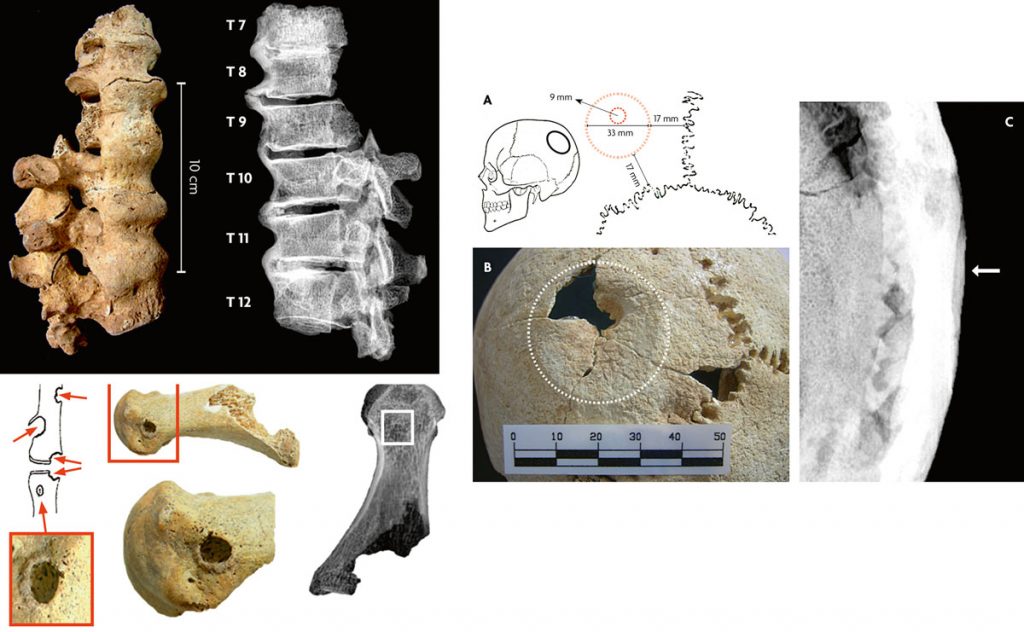
Left: Figure 10. The picture on the left shows diffuse idiopathic skeletal hyperostosis (DISH) or Rotés-Querol disease in a mature-senile individual (55–65 years old) of the founding population of Valentia buried in a chamber tomb. The picture on the right shows monoarthritis in the first left metatarsus compatible with gout in a male individual of the republican period of Valentia.
Right: Figure 11. A 20–25-year-old male from the first century AD who underwent trepanation with a 9 mm drilled hole in the left parietal cranial bone (images A and B); C shows the X-ray of the injury. The individual survived the procedure, which may have been carried out for therapeutic and ritual purposes. / Grup Paleolab®
Due to the scarcity of described cases in Hispania, the discovery of a trepanation carried out with a drilling technique in an individual from the first century AD was of note (Figure 11). There was no endocranial evidence of any pathology to justify this practice and so we have not dismissed the possibility that the surgery was performed for therapeutic and ritual purposes. In any case, the individual survived the surgical procedure.
«Paleopathology, diagnosing a condition in the past, is not an easy task»
Finally, it is interesting to reflect upon the relationship between pathology and social stratification, which allowed us to understand certain behaviours associated with the funus. The results indicate that the diseases documented in the individuals buried in the highest-ranking tombs (hypogea) had suffered significant biomechanical stress and from infectious diseases (pyogenic and pulmonary infections such as tuberculosis). The finding of DISH and, potentially, gout reinforces the interpretation of the higher social status or opulence of these individuals, which would correspond to the social elite of the colony. On the other hand, burials in anomalous or prone positions, as well as the case of the slave/captive, are characterised by a high association with antemortem (44.44 %) and perimortem (27.78 %) trauma, infectious diseases such as tuberculosis (33.33 %), metabolic deficiencies (50 %), and a high prevalence of early joint degenerative pathology (66.67 %). From a chronological point of view, most of these cases took place during the first and second centuries AD, the time of reconstruction and splendour of the city.
Teeth and chemistry: evidence of the classic Mediterranean diet
The diet in Valentia has been analysed using different strategies including chemical analysis (stable carbon and nitrogen isotopes) and dental analysis of microwear (as an indicator of the degree of food abrasiveness) and photolytes (small silica or calcium oxalate microcrystals absorbed by plants and embedded in enamel and tartar). During the Republic-Empire transition, no major changes were found in the subsistence economy, which was based on an agro-pastoral system and which followed a typical Roman-Italian economic pattern. It had a mixed diet mainly based on wheat and cereals, as well as fruits, vegetables, and animal proteins, but with little contribution from marine products (despite it being a coastal population).
«Both burial and cremation rituals were practiced in Valentia from the earliest years»
Isotopic results have made it possible to profile intra- and inter-group food variability according to certain social stratification indicators (such as the use of hypogea versus simple pits). During the imperial period, individuals belonging to disadvantaged social groups (the slave/captives and those buried in a prone or anomalous position), had different isotopic values, especially with respect to the general population (simple graves), but not compared to the hypogea of the previous phase (Figure 12).
The rate of infectious pathological conditions fell within the population average, so we can infer that predisposition to serious diseases such as tuberculosis was not conditioned by a differing diet (poorer or richer in proteins). However, the diet of individuals associated with non-deficiency metabolic pathologies was somewhat more vegetarian, with a relatively low level of animal protein compared to the average population. This leads us to wonder whether their distinct diet in the last 10–15 years of life was conditioned by the recommendation of a local physician or as a therapeutic measure against pathological processes that produced suffering and functional limitations.
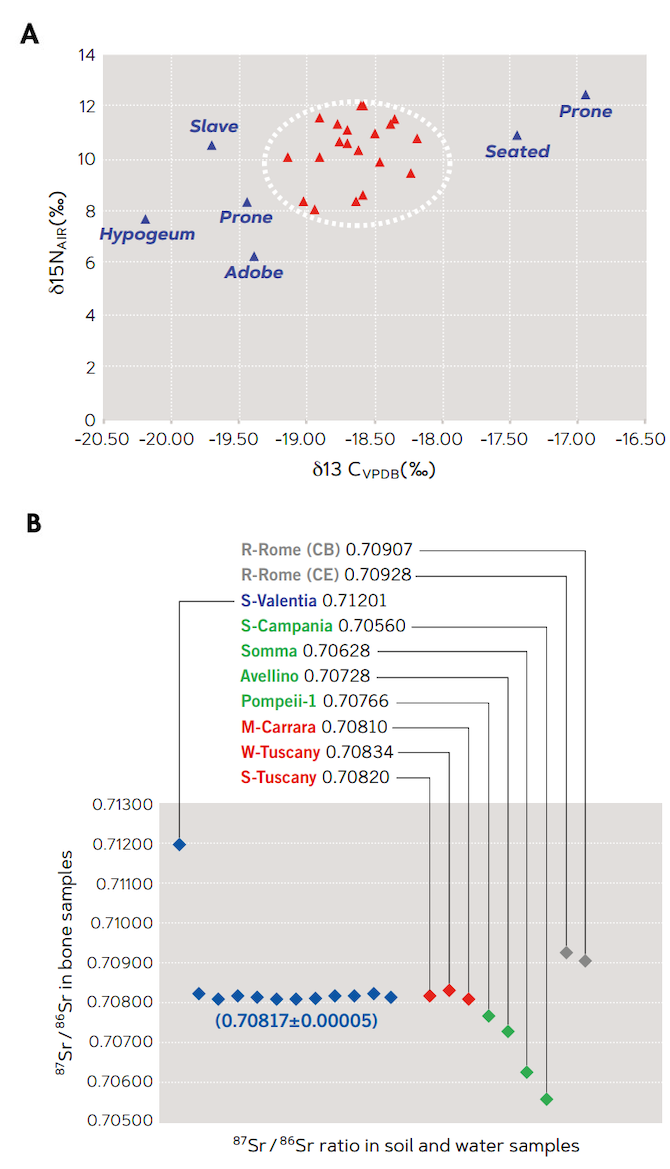
A. Figure 12. Isotopic values related to diet variability in individuals from Valentia. Red values are associated with the general population and blue values relate to funerary rituals different from the average (due to social stratification, etc.). The δ13C isotopic value indicates the amount of protein in the individual’s diet (of any origin); the more negative this value, the more vegetarian their diet was. The δ15N value indicates vegetable proteins consumed versus the ones of animal origin and is a good indicator of a carnivorous, omnivorous, and herbivorous diet. In this case, the higher the value, the more carnivorous the diet was. / Source: Grup Paleolab®
B. Figure 13. Isotopic strontium (87Sr/86Sr) values in individuals from Valentia and comparison with soils and natural waters from various parts of the Italian Peninsula. The similarity of the blue diamond values corresponding to the first individuals of Valentia and the red diamond values corresponding to samples from the ancient area of Etruria (present-day Tuscany) indicates that the founders of the city came from these lands. In addition, the contrast between the values of the human remains and the soil sample of the foundational necropolis of Valentia (0.7120) is also an indicator of this foreign origin. The Roman samples come from Casal Bertone (CB) and Castellaccio Europarco (CE). / Source: Grupo Paleolab®
Where did they come from?
Finally, the most interesting aspects of Valentia’s history are related to the identity of its founding architects and their origin. Research on the origin of the first settlers is based on documentary sources (historiographic records, numismatics, and epigraphs) and archaeological parallels. The monetary magistrates and epigraphy present a list of italic people and families from the south-central zone and Etruria (Pena, 2002). Archaeological data and historiographic documentation support the hypothesis of a foundation population comprising a diverse foreign population (military and civil), at least partly of Hellenised italic origin.
«The necropolis in Carrer Quart is one of the best testimonials of the origin and evolution of the city»
Beyond the information provided by classical sources, complementary techniques can help us to understand the mobility and origin of ancient populations. For example, strontium isotope (87Sr/86Sr) analysis can contribute new information. Its importance lies in the fact that the isotopic relationship in the bones and teeth of an individual corresponds to the values of the plants, animals, and water they consumed, and also correlates with the isotopes in the soil of a geological region. Because tooth enamel does not regenerate or incorporate new material after its formation, isotopes closely reflect the geological region that person inhabited when the enamel was formed. Bones, on the other hand, are in constant regeneration and show isotopic values that reflect the region in which the individual lived just before their death.
Based on these principles, we carried out an isotopic inter-group analysis on human, animal, and soil samples from both time periods. The values obtained in the hypogea were very similar (0.7081–0.7083) and animals also produced homogeneous data, indicating that this sample of individuals lived in the same geographical region. However, the soil sample taken from the geological sediment of the necropolis corresponding to the foundational period provides data that disagree with the human sample analysed (0.7120). In other words, archaeochemistry demonstrates that the founders of the city were foreigners.
Given all the above, we can conclude that science and memory come together in the study of the origin of Valentia through the culture and customs documented in its funus. While not denying the more traditional hypotheses advocated in historiography, which base the origin of the city on Central-Italian (Samnite) zones, archaeochemistry has offered a new vision of the origin of the first settlers, thus progressing our historical knowledge and probing into the memory of our ancestors
References
García-Prósper, E. (2016). Los ritos funerarios de la necrópolis romana de la calle Quart de Valencia (siglos II a. C-III d. C). Valencia: Universitat de València, Departament de Prehistòria i Arqueologia.
García-Prósper, E., & Polo-Cerdá, M. (2016). Los primeros pobladores de Valentia. Un proyecto transversal de ritual funerario y bioantropología. Arqueología Somos Todos, 5, 18–20.
García-Prósper, E., Polo-Cerdá, M., & Guérin, P. (2003). Rituales funerarios ibéricos en la necrópolis fundacional de Valentia. Anales de Arqueología Cordobesa, 13-14, 279–310.
García-Prósper, E., Polo-Cerdá, M., Romero, A., & Iborra, P. (2010). Rituales alimentarios y economía de subsistencia en las tumbas de cámara de la necrópolis romana de la calle Quart de Valentia (ss. II a. C - III d. C). Saguntum extra, 9, 233–242.
Macdonell, W. R. (1913). On the expectation of life in Ancient Rome, and in the provinces of Hispania and Lusitania, and Africa. Biometrika, 9(3-4), 366–380. doi: 10.2307/2331898
Pena, M. J. (2002). Problemas históricos en torno a la fundación de Valentia. In J. L. Jiménez, & A. Ribera (Coords.), Valencia y las primeras ciudades romanas de Hispania (pp. 267–278). Valencia: Ayuntamiento de Valencia.
Polo-Cerdá, M. (2017). Paleobiología humana de la fundación romana de Valencia. Alicante: Biblioteca Virtual Miguel de Cervantes.
Polo-Cerdá, M., & García-Prósper, E. (2002). Ritual, violencia y enfermedad. Los enterramientos en decúbito prono de la necrópolis fundacional de Valentia. Saguntum (Papeles del Laboratorio de Arqueología de Valencia), 34, 137–148. doi: 10.7203/SAGVNTVM..1902
Polo-Cerdá, M., García-Prósper, E., Guérin, P., & Villalaín, J. D. (2004). La fundación de Valentia y sus primeros pobladores. Primeras evidencias osteoarqueológicas de tuberculosis en Hispania. Zona Arqueológica (Miscelánea en homenaje a Emiliano Aguirre), 4(3), 292–305.
Ribera, A. (1998). La fundació de València. La ciutat a l’època romanorepublicana (segles II-I a. de C.). Valencia: Edicions Alfons el Magnànim.
Ribera, A. (2009). La fundación de Valentia: Un apéndice de Italia y Campania en la Hispania del siglo II a. C. Oebalus. Studi sulla Campania nell’Antichità, 4, 41–77.
Ribera, A., & Jiménez, J. L. (2014). La imagen urbana de Valentia. In M. Olcina (Ed.), Ciudades romanas valencianas (pp. 143–165). Alicante: MARQ.
Thillaud, P. L., & Charon P. (1994). Lésions ostéo-archéologiques. Recueil et identification. Sceaux: Kronos B. Y. éditions.



